Mike Eitel build this complete rebreather. Please enjoy the design steps of the Swiss MeCCRV2.
Michael is a person who build his own CNC drill, his own CD label printer and did many other inventions. Of course he then start building rebreathers. After the MeCCR followed the MeCCRV2. Please enjoy the design steps of the Swiss MeCCRV2. I would like to thank Michael to share his thoughts and building efforts with us!
Second Generation rebreather MeCCRV2
General definitions
We in Switzerland are often diving in cold water. The RB must be of certain robustness. Not to heavy, sea water resistant.
Cleaning must be easy, refilling fast. Two dives without service are nice.
That defines 5 liters of diluent, 1.5 liter for the dive, 3.5 for safety, 200 bar is enough, as you can get it anywhere.
Retrofit for second diluent gas is foreseen. 2 liter of oxygen is enough. 2 Kg of chalk is also enough.
O2 injection is adjustable, constant mass flow with possibility to retrofit additional O2 injection by a digital electronic valve.
Diluent and O2 hand valves give full manual control of the mix.
The lungs volumes are inside the box and adjustable 4 – 6 liters.
Jacket is constantly fixed in form of a wing; plus lead pockets. No lead weight is fix mounted, all are easy to take away for transportation.
O2 Sensors are on ambient pressure; rest of all electronic is on constant 1 bar. One O2 gauge is fixed part of the RB with very long battery lifetime;
big lighted numbers are a must in my age.
A battery for the light should be inside the housing.
Details
On my first dive with a RB, my scrubber was flooded after 5 minutes.
Also I had perfectly passed over- and under-pressure test but, doing a rolling exercise, a not perfectly closed click connector got loose …
I learned my lesson !!!
One old sentence says: Never touch a running system. So my rebreather must be constructed to stay normally assembled, included cleaning, beside the only exception of taking away the breathing tube after dive. Also exchanging the chalk must be done with minimal removing.
Points of concentration:
a.) All connections on a fixed body
By experience with other rebreathers, I decided to have everything connected to a “main body”. All forces are concentrated on this solid peace of plastic. In case of emergency somebody should be able to drag on the breathing tube, and at least not the self-made part should “not start disassembling “. The same body is the counterpart of my scrubber. I use four 6mm screws to press again one big O-ring. In over hundred dives this “over dimensioned fixation” never failed.

b) Lungs.
I wanted them flat on my body. That defined the basic positioning of the components. The way I positioned the two lungs can “store” a lot of water before I might have a caustic gasp. On my first RB I used the Dolphin idea and installed those plastic screws. Nice but fiddling around with cold fingers was nerving. To clean them easy they end in a triangle and in the corners small tubes are glued in. These tubes end at the bottom of my RB and are closed by small Garden water valves. As the lungs are between the RB body and a mounting plate the volume is defined. I planed to make the volume easily adjustable by placing on top an additional plate between mounting plate an lungs. By using some screwing system I could have restricted the lungs volume by increasing distance between mounting plate and this plate, but this pressing together of the lungs was not necessary. Maybe in next RB…
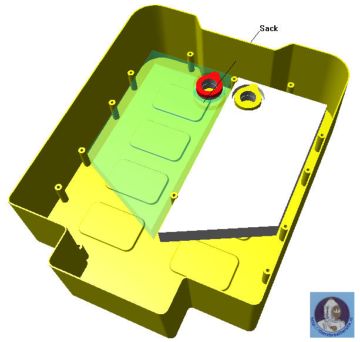
c.) Housing and pneumatic and weight considerations.
Housing is made with fiberglass in vacuum forming. On specially stressed parts, like fixation screws, it’s reinforced by stainless steel perforated plates. All pneumatic are based on Swagelok parts and 25 bar tubes. External connections for octopus, inflator etc. are also stainless steel parts, screwed to the housing. O2 bottle is carbon, diluent for money reasons steel, until now. O2 in carbon gained > 2 Kg, steel replacement would bring ca 5.Kg. The wing jacket has 2 lead pockets and on the sides there are sailboat rails on with additional lead can be “slided” . With dry suit in sweet water I need: 2 x 2 Kg in the pockets and 2 Kg on the Oxygen bottles side. Battery tank is also on the Oxygen side. I have different 12 cell NiMH tanks. 7 Ah and 2.5 Ah. Last is enough for > 2 hours of lamp operation, and as I use my dimmable high efficiency LED lamp. Constant max 1’700 lumen is to much ! This tank has ca 1 Kg.
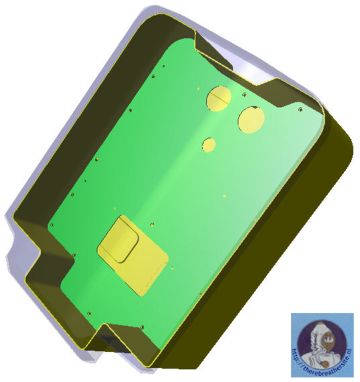
d.) O2 sensors:
The sensors must stay in the RB. So I need a way to protect them while cleaning. I positioned three, as triangle, in housing and used a 45 degrees turnable “plate”, with three holes, in front of them as a valve. The trick is that the sensors are screwed through the plate so they overlap ca 1.5 mm. Then it is enough to place O-rings around them. The O-rings stay in position. Pressing the plate again these O-rings gives a nice, watertight construction. You can easily test the tightness by closing the valve and wait a couple of hours. You will see your ppO2 falling.
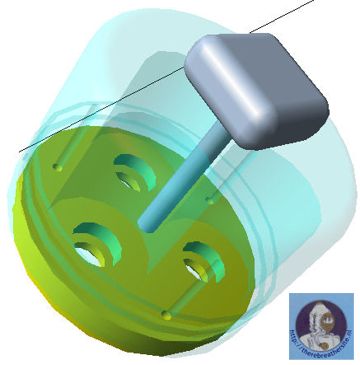
e.) O2 Measurement
My last version has three boxes. On the first glance that seems to complicated, but is the result of an experience process. In the front I have a combined armature with hand O2/ diluent injector, O2 manometer and O2-display [ 4 digits, 14mm, self lighting green when in dark and showing battery voltage when approached by a magnet, and super bright blue led to display alarms ]. The display is completely casted in resin. Hidden between body and mounting plate there is the also completely casted main electronic. Via a screw joint, outside of the RB, I can adjust O2-slope and high-O2 alarm. Last in the chain is the battery tank, including reed contact. The according switch is also outside of the RB body. The battery last ca 500 hours when light switches on.
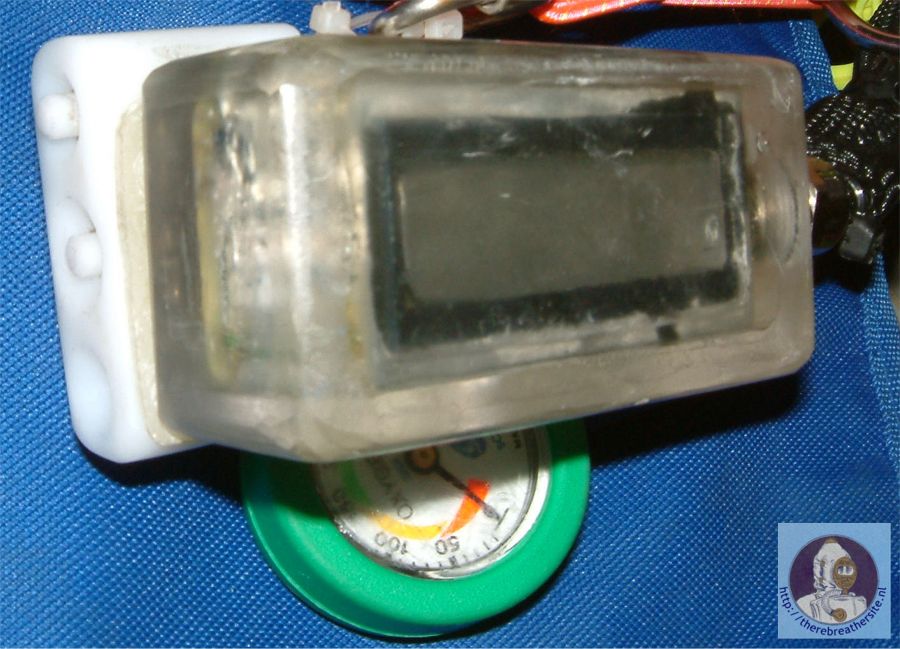
f.) Cleaning and service
After dive I unplug my breathing tube ( modified Dolphin ) and close by two small plastic plugs. If I have to change chalk, I unscrew the four screws and drag the scrubber ca 5cm back. Closing the sensors by turning the silver knob. Open the cap by two spikes, turn the lungs valves and let out the fluids. When necessary unscrew the battery. That’s all ! Max 5 min.
When carrying I slide the lead from the rails. And for cleaning I can take the garden hose and rinse everything. Sterilize is similar.
Conclusion and what I would consider for next RB
I’m quite happy with the result. Maybe it’s a bit to wide > water resistance!
- I’d like to have the 8 Kg steel changed against 3 Kg carbon. Would make it easier to fly with and lighter in transport. Could be interesting to trim…
- It needs a plug on system for the third gas. This is foreseen in form of a stage tank, who’s inflator is plugged in RB
- Maybe have small ( carbon ) normal air tank in the RB ( as tare and emergency gas) and diluent is always in stage connected by inflator hose….
- Make a small, slim line RB for heavy current river dives.
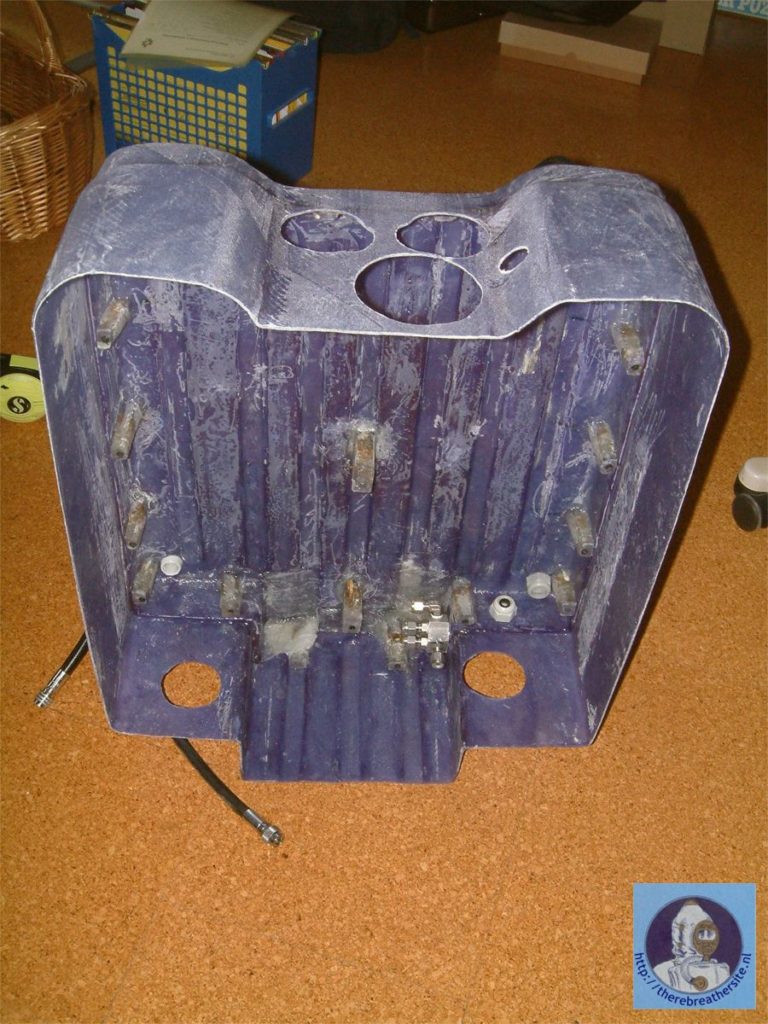
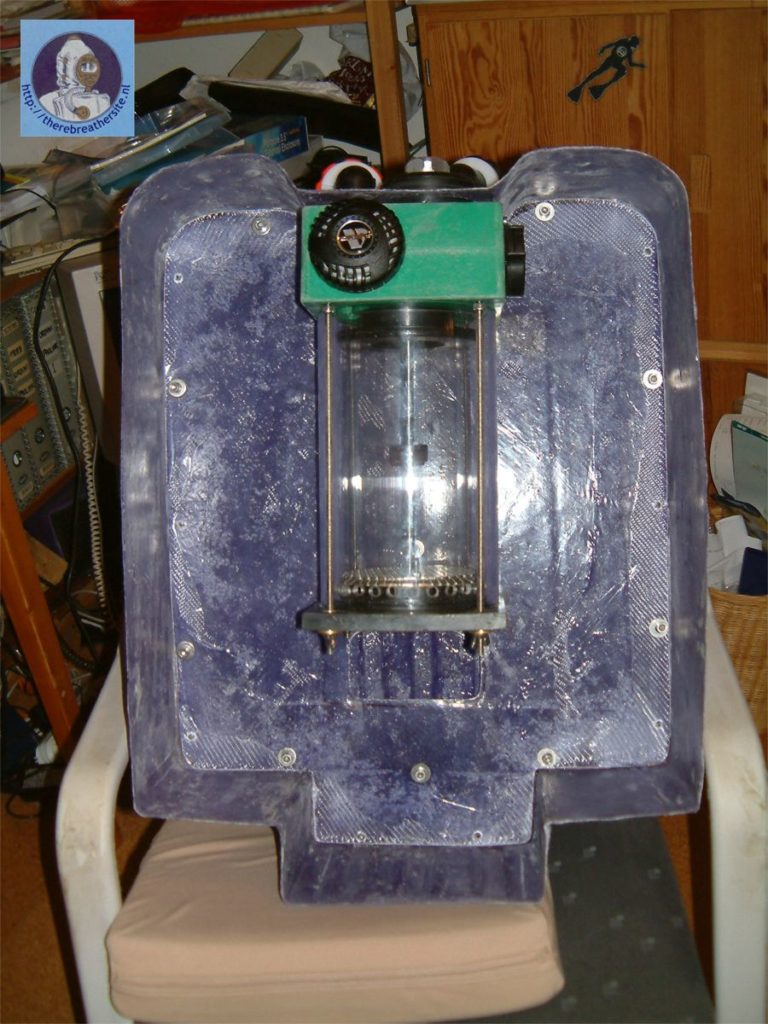
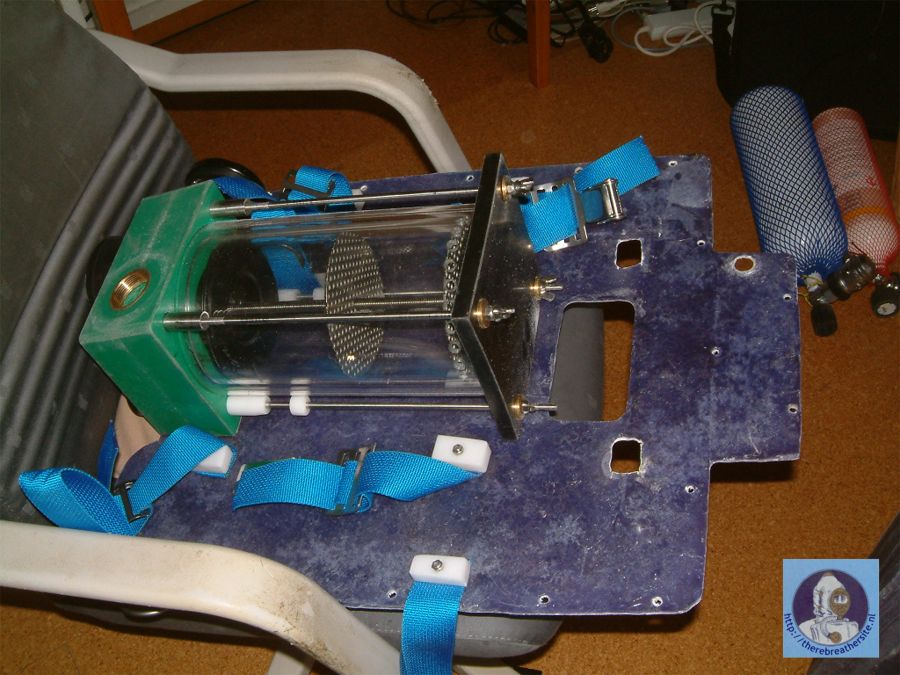
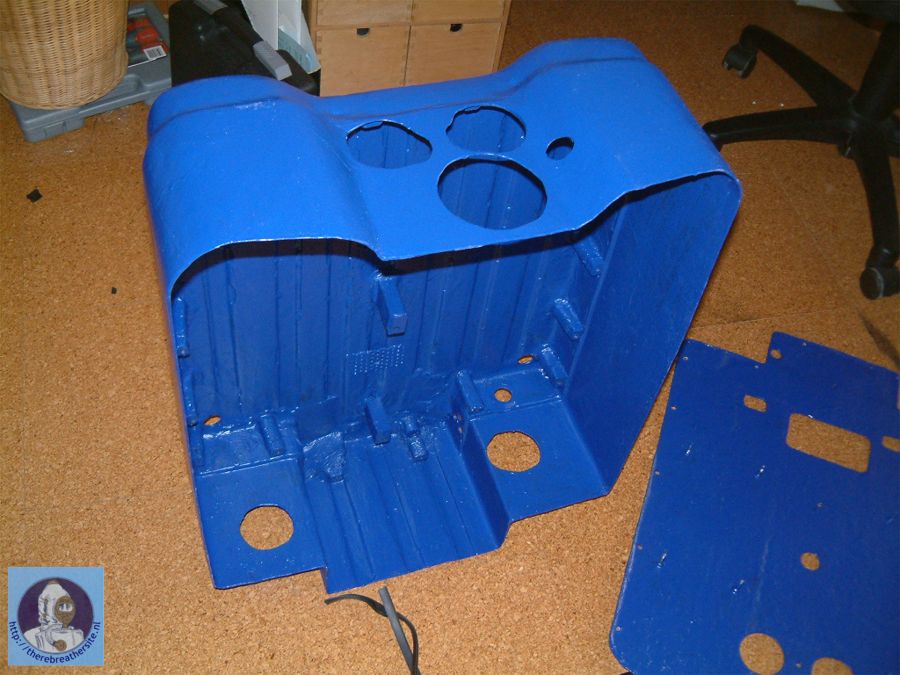
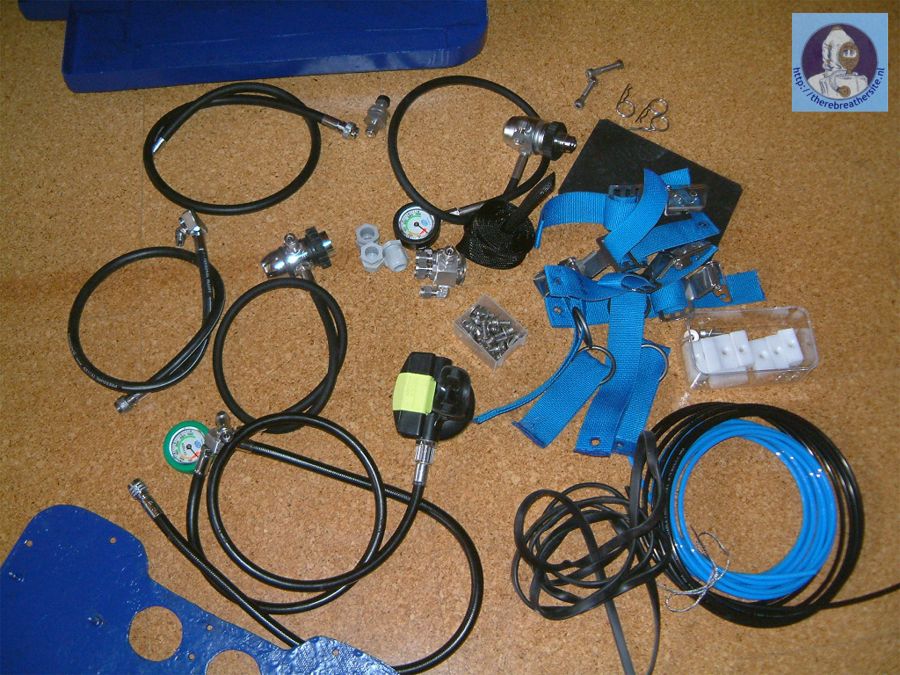
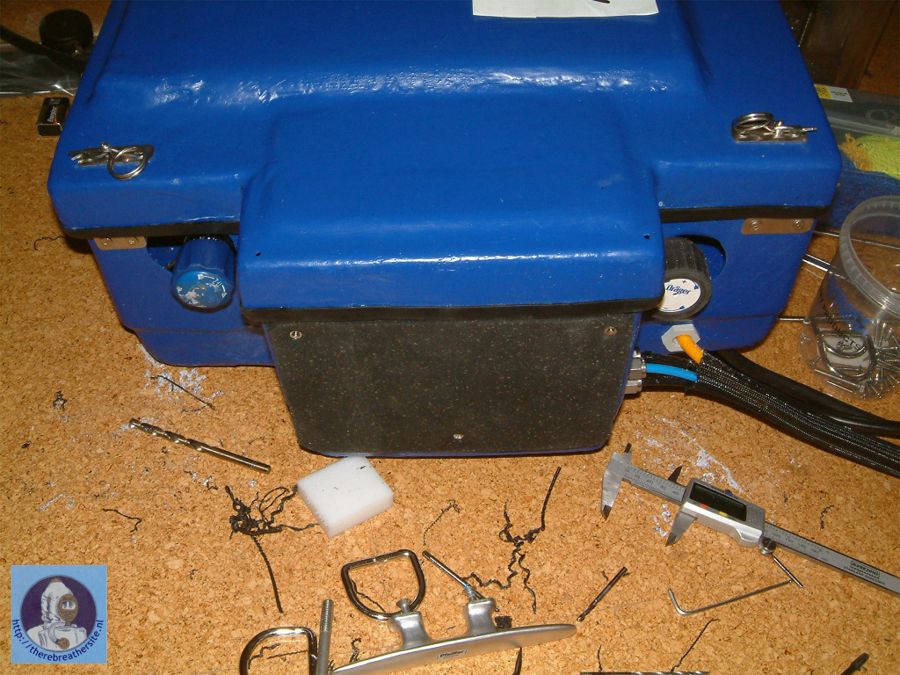
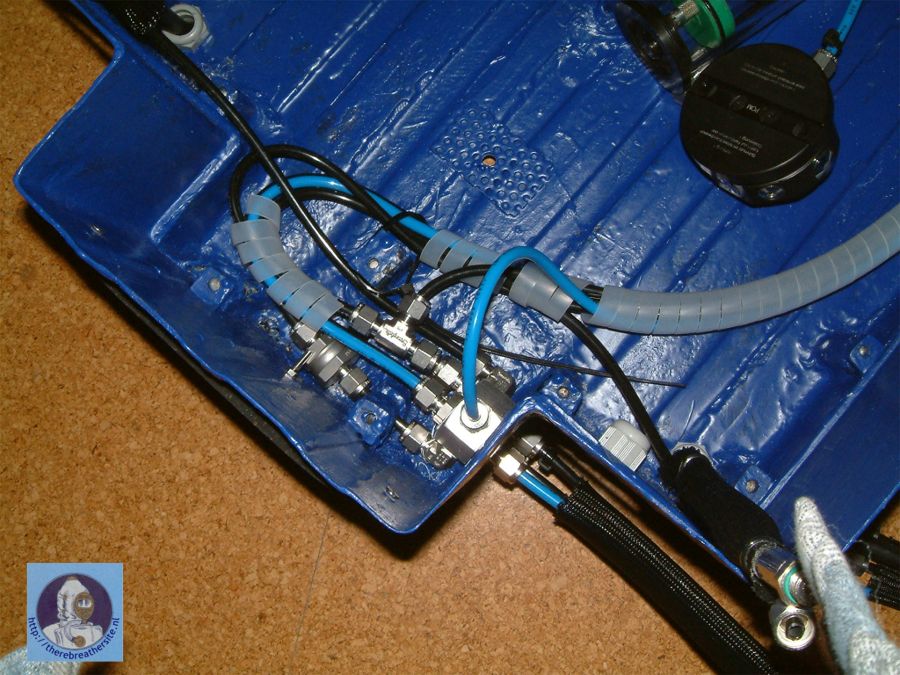
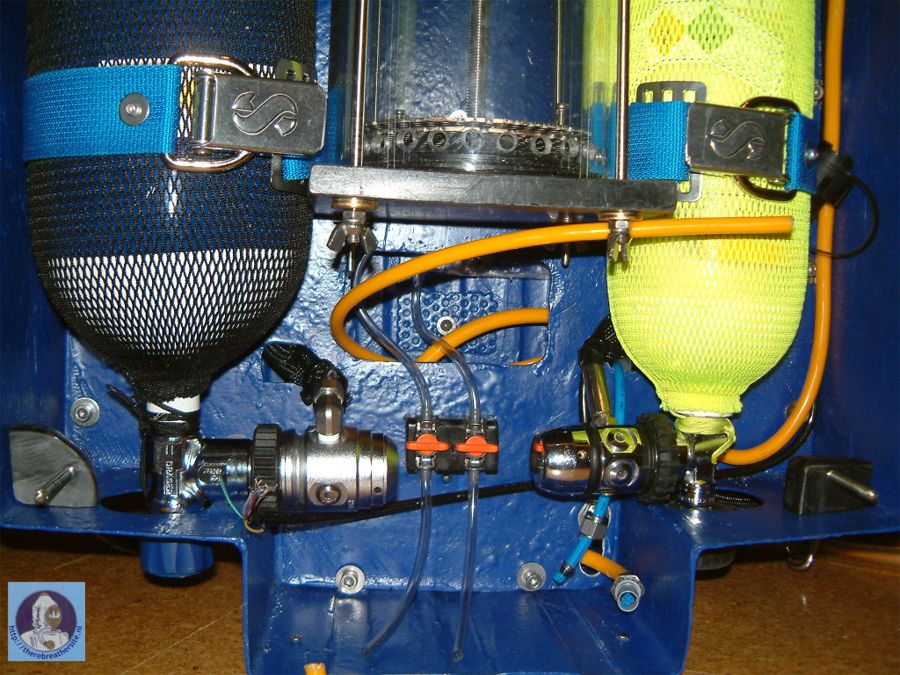
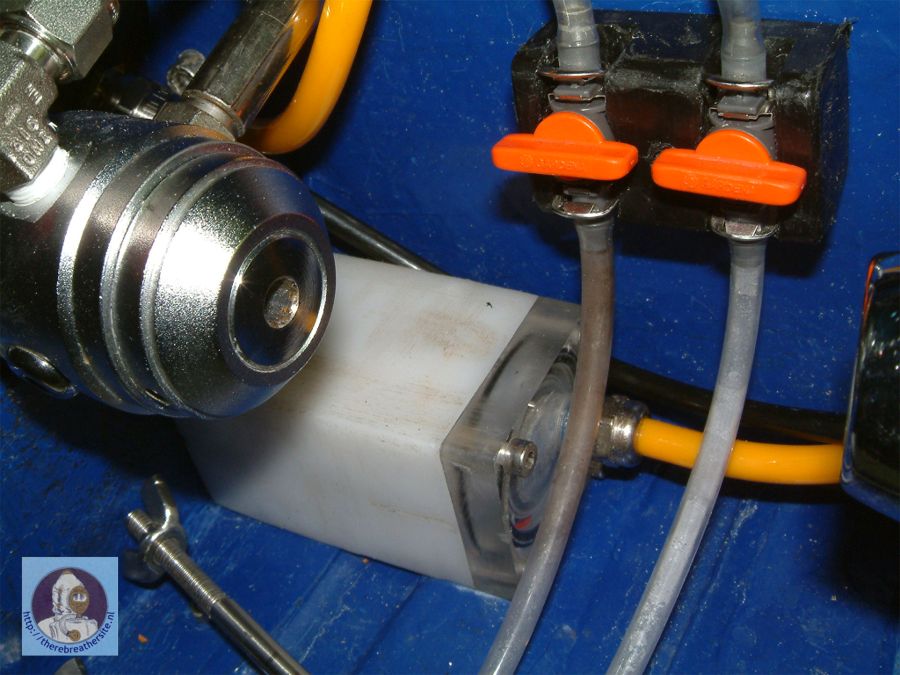
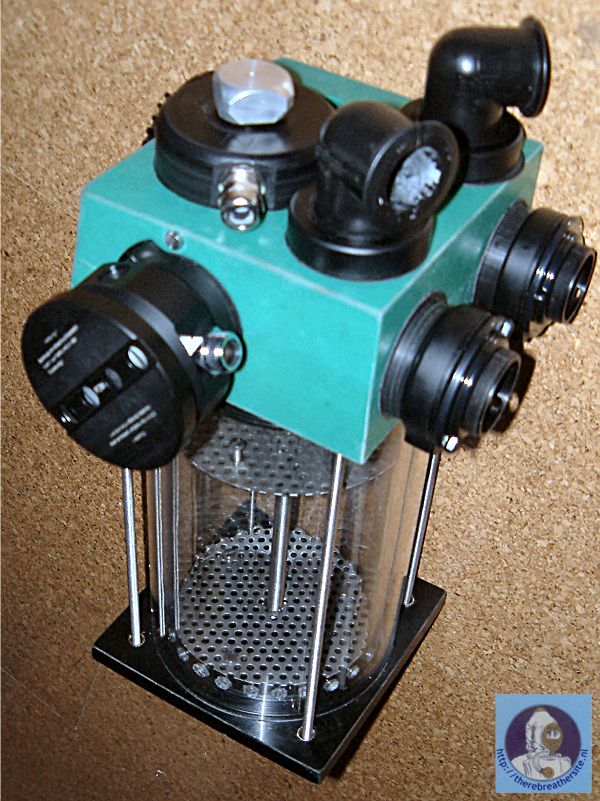
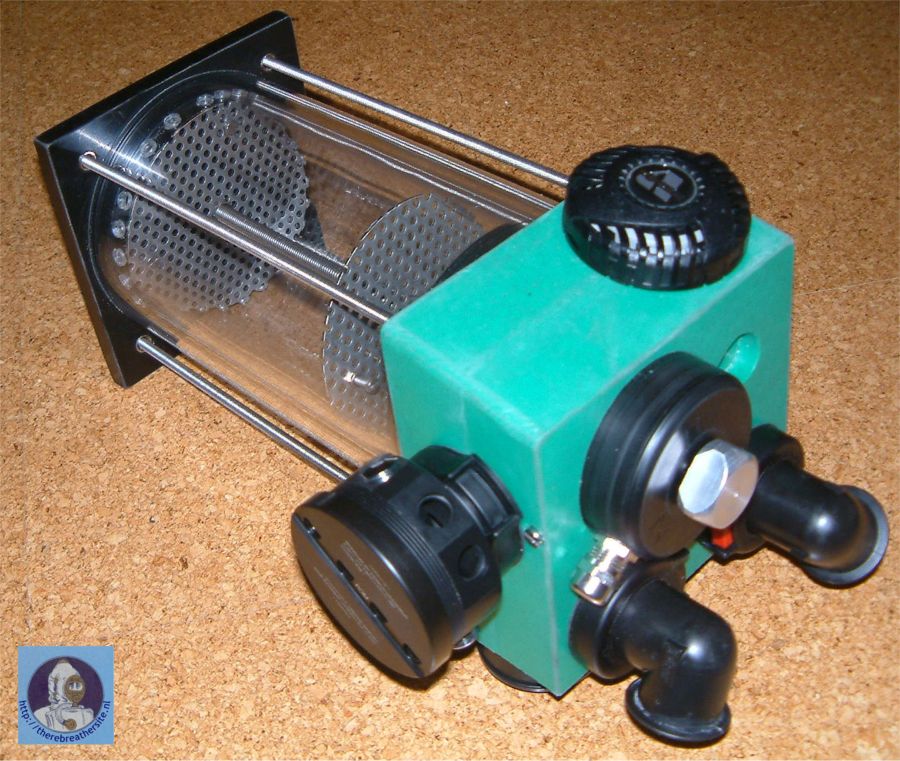
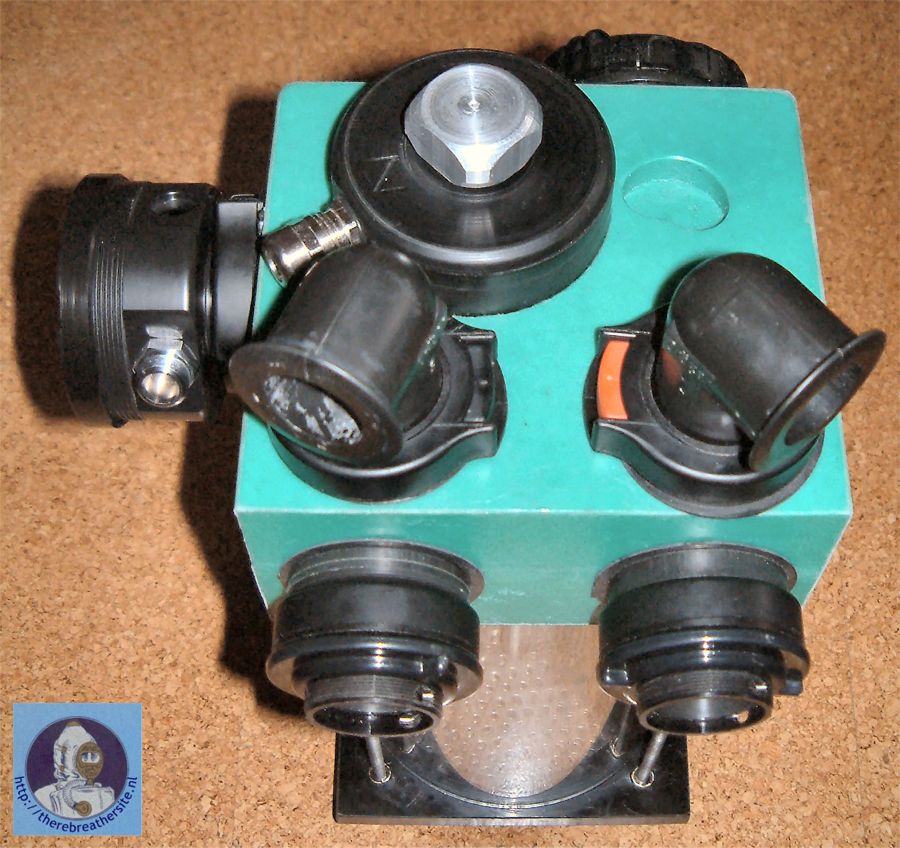
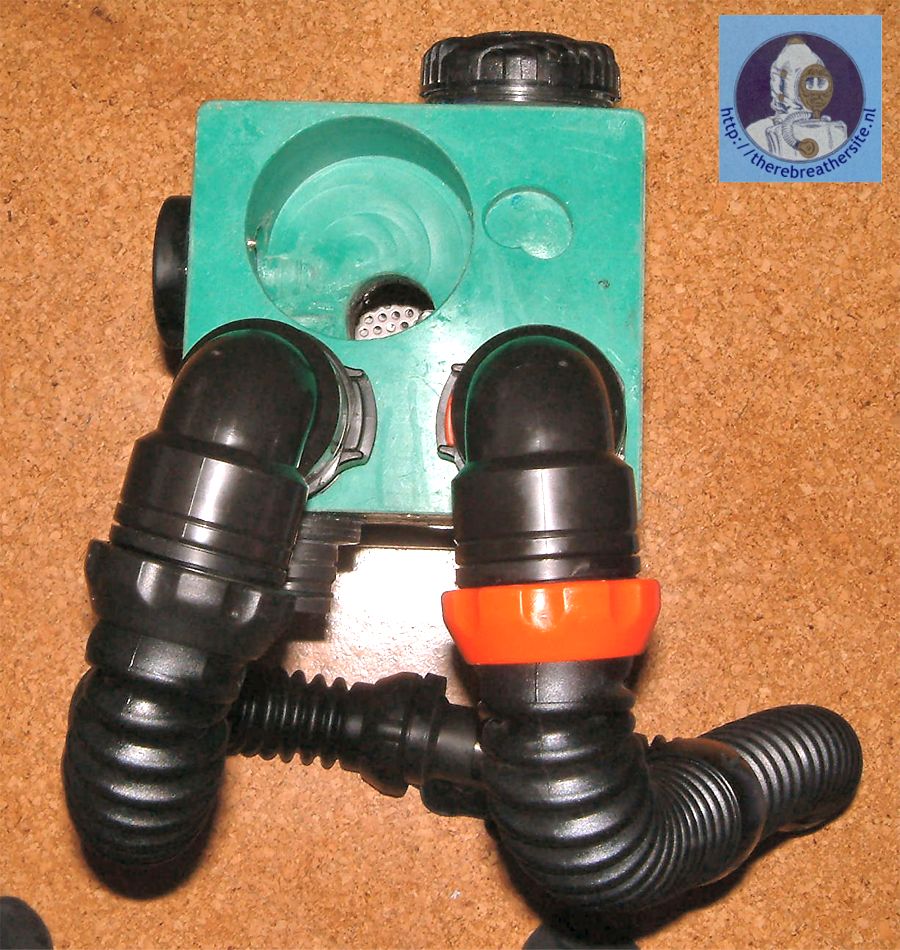
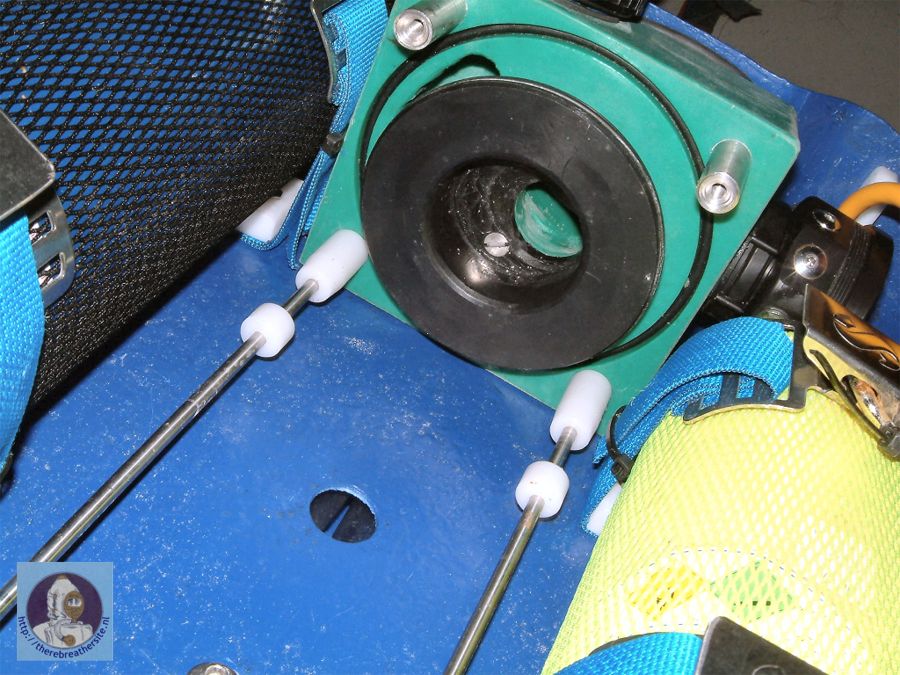
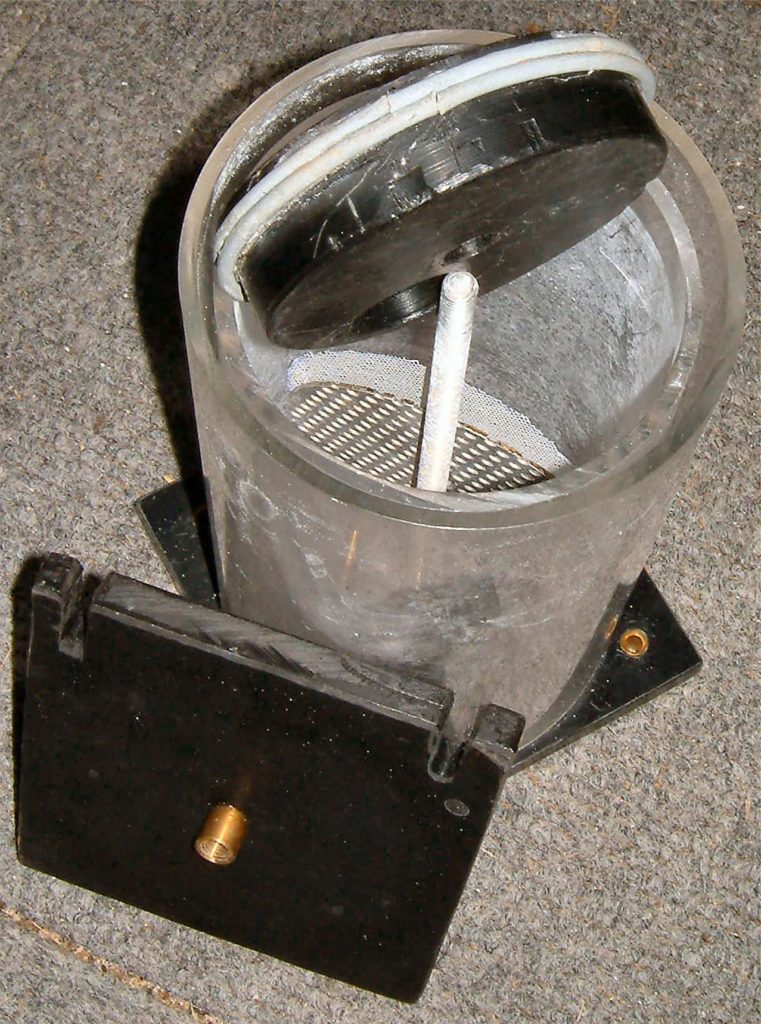
On the image you see two black parts.
The big one is to close the scrubber airtight when dismounted with still usable chalk. I have good experiences by
using my 2 Kg up to 300 calculated minutes. Means when I have a 51 minutes dive, I calc-up with 55 min
Used coloring chalk to test that I never came near to the end.
2. small one I use to hover my scrubber. I started from first day to fill my scrubber as it has to be.
Then I press it with that 10mm screw relatively strong. And then I use strong hover to suck out the dust. Only once
While a holiday in Spain, Cala Joncols I had no hover and smelled always chalk…. Me dummy forgot the second possibility
by reverse blowing the dust out of the scrubber via normal diluent… Using a blow tube, I had with me L
And last I have on my breathing tube additional 2x 300g weights. That way the tube is more on your shoulders. I find that nicer to dive and astonishing less water resistance.
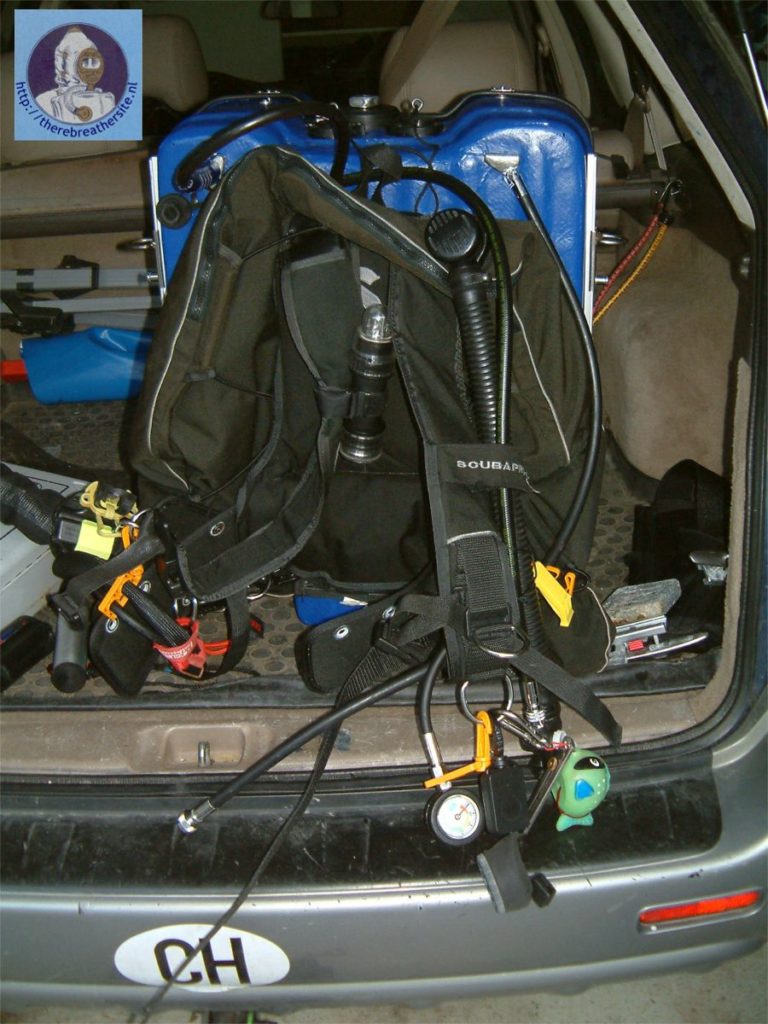
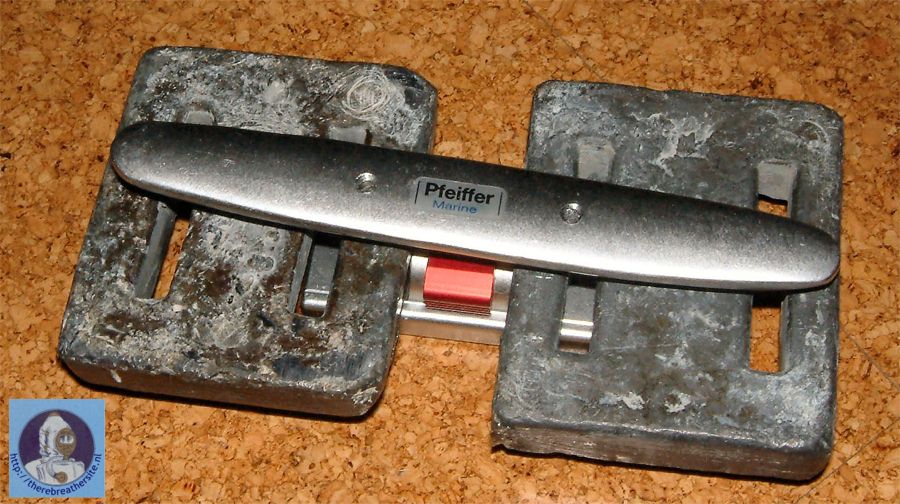
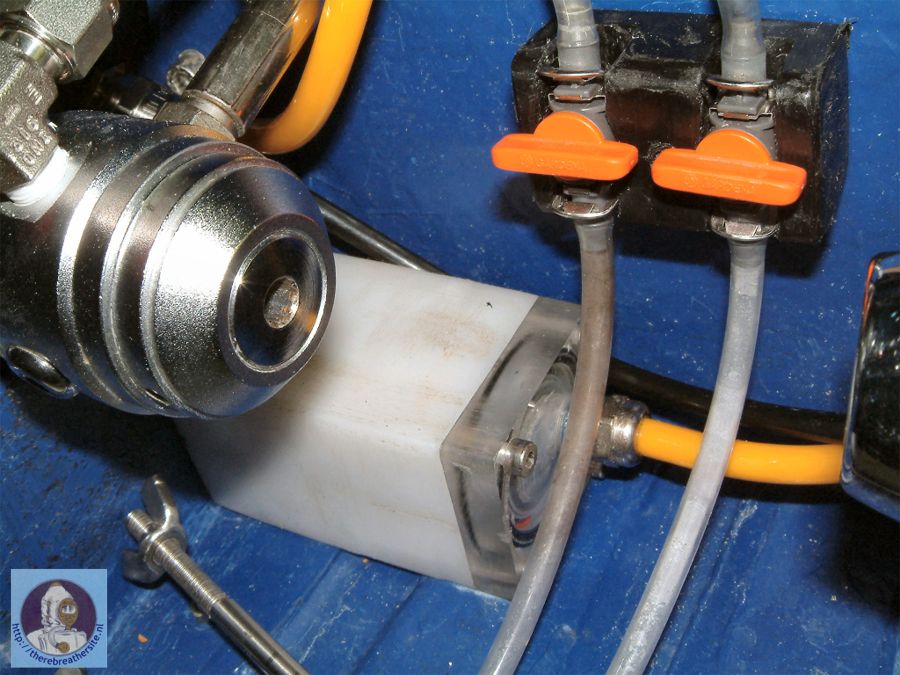
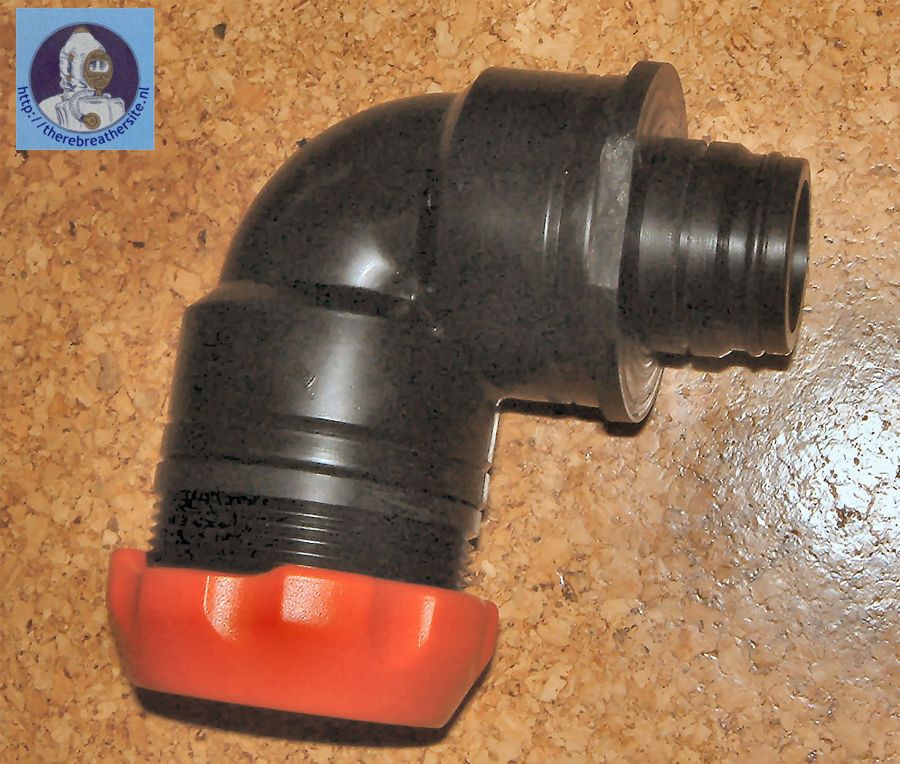
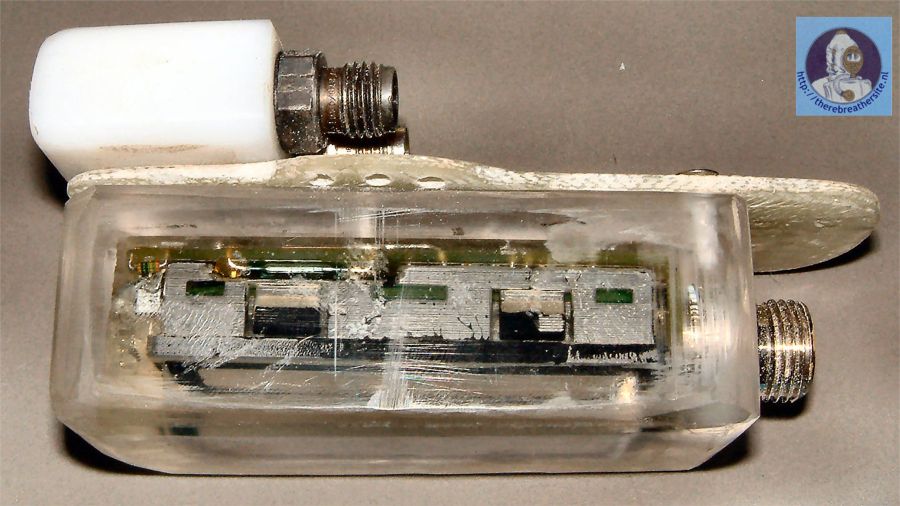
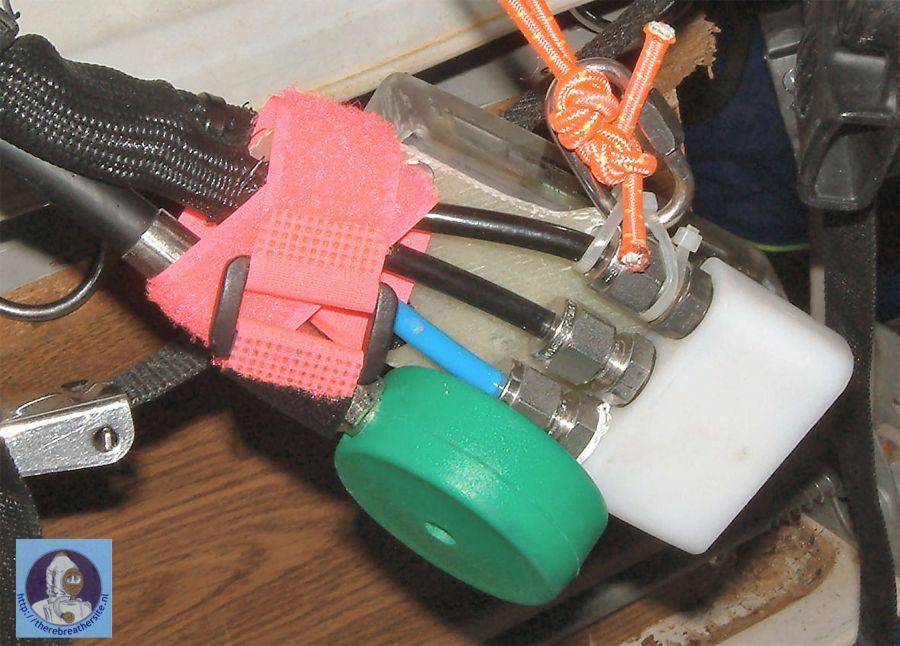
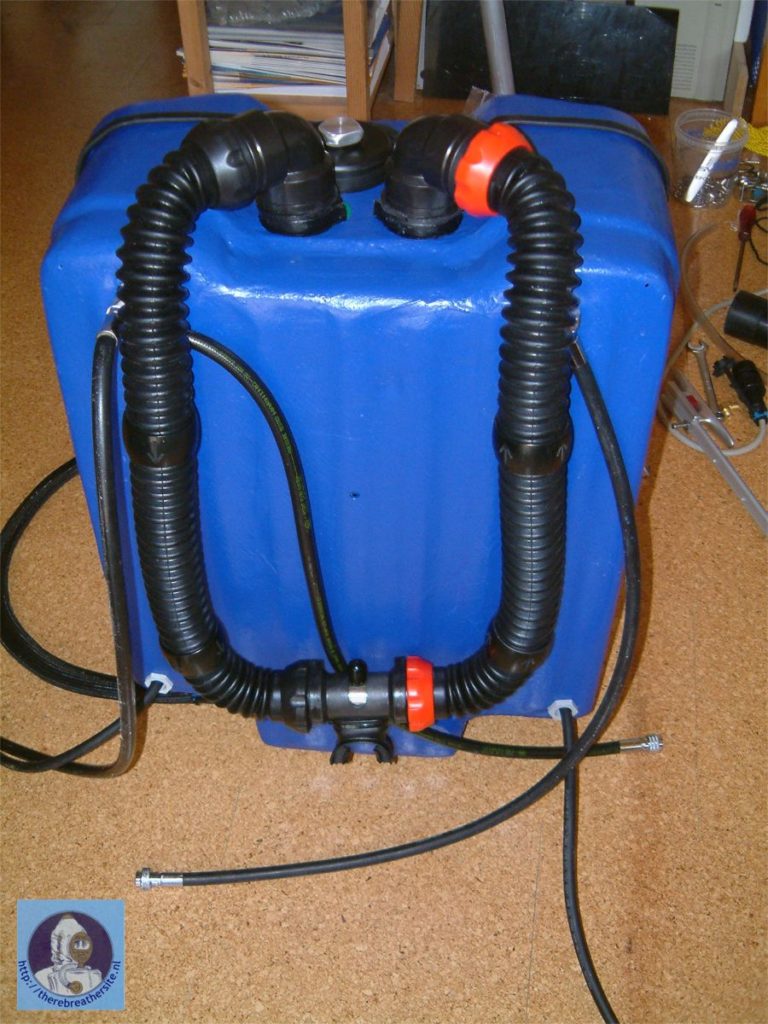
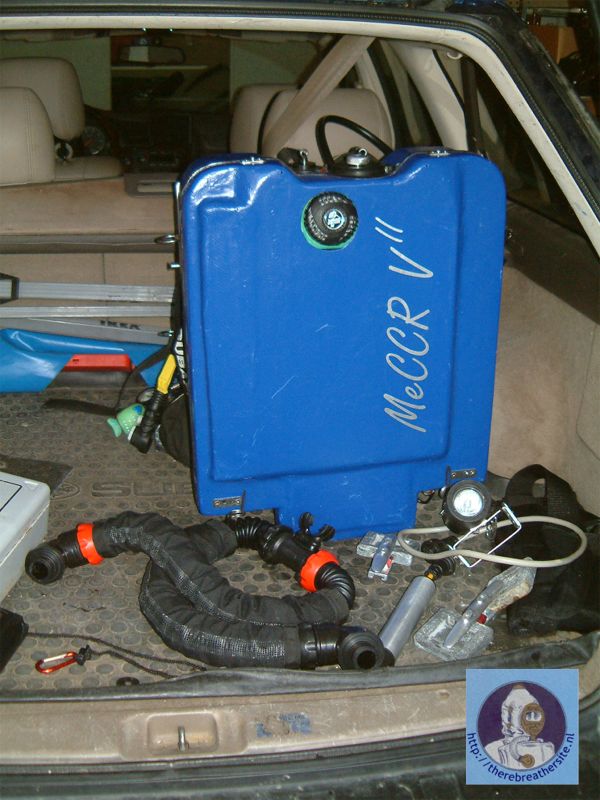
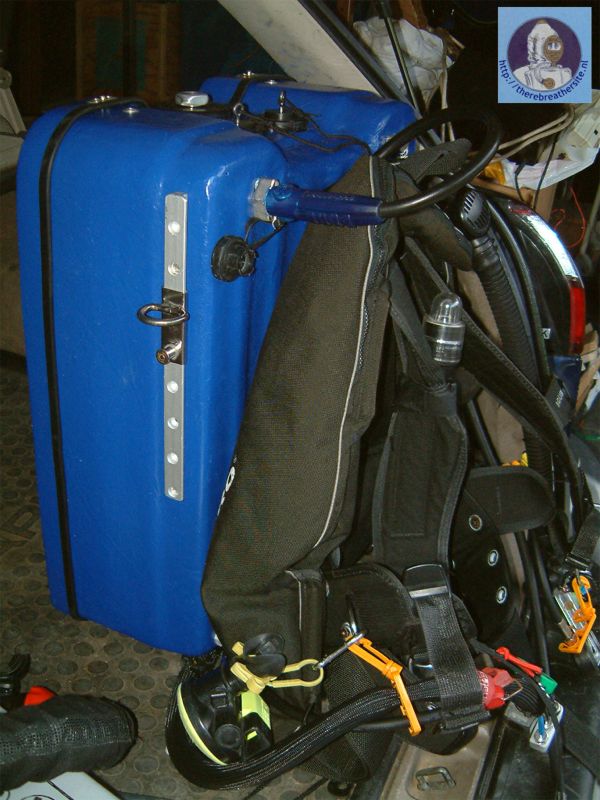
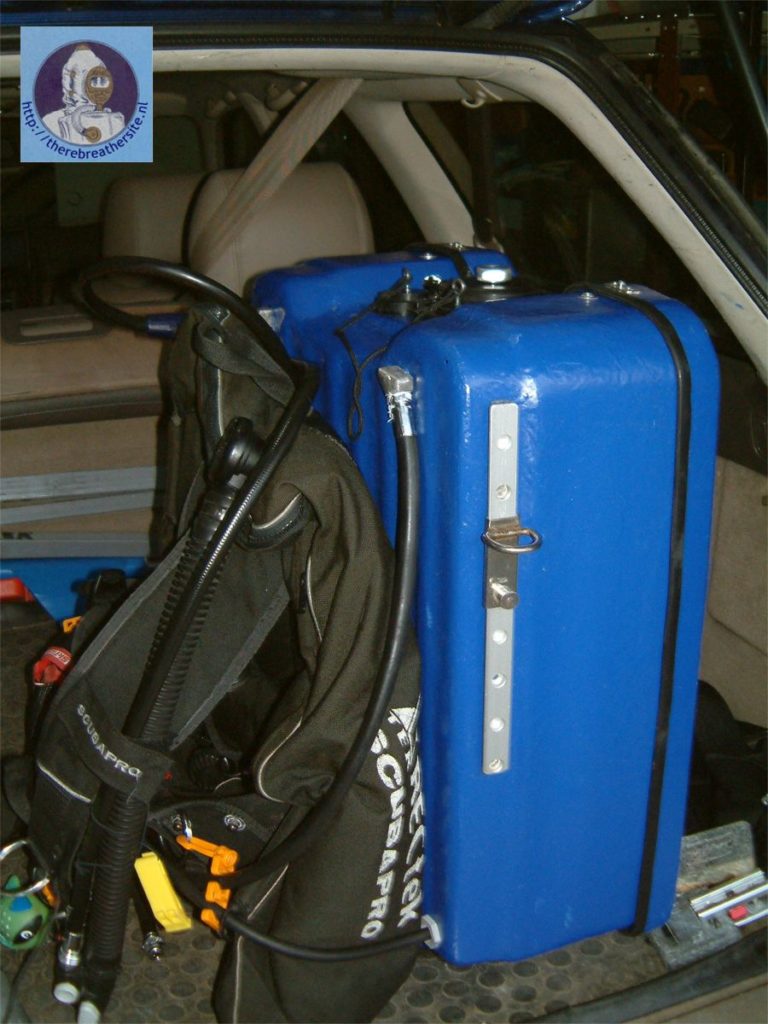
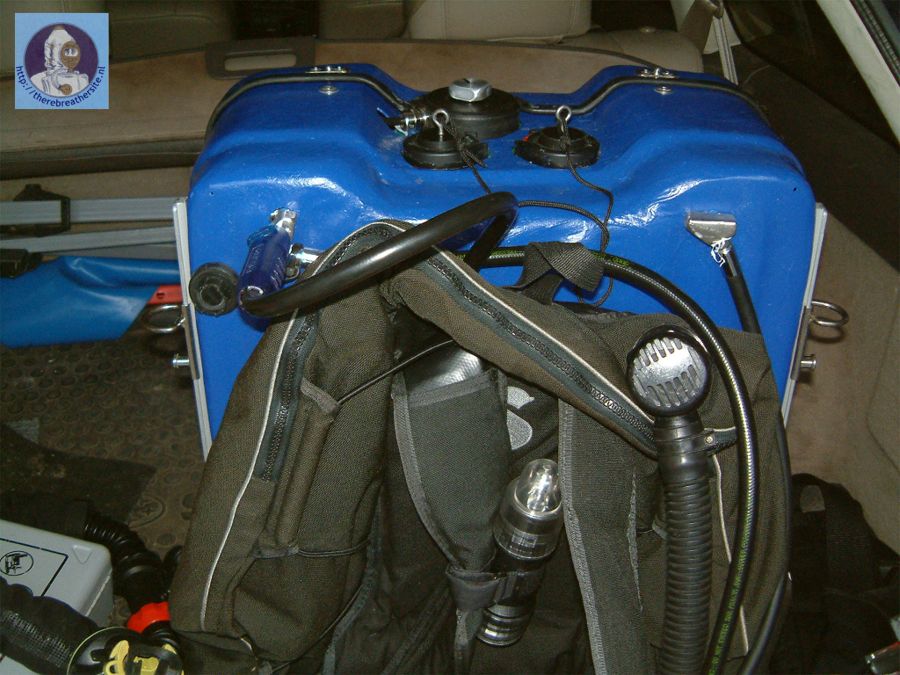
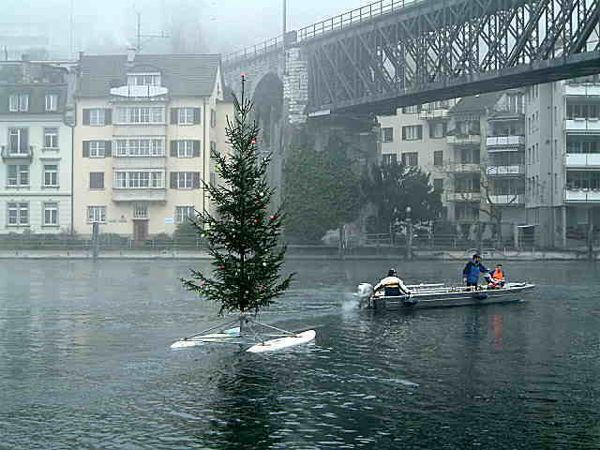
For additional information please check michael’s website here
Michael, thanks for sharing this information with us!
page first published 27-01-2008

Therebreathersite was founded by Jan Willem Bech in 1999. After a diving career of many years, he decided to start technical diving in 1999. He immediately noticed that at that time there was almost no website that contained the history of closed breathing systems. The start for the website led to a huge collection that offered about 1,300 pages of information until 2019. In 2019, a fresh start was made with the website now freely available online for everyone. Therebreathersite is a source of information for divers, researchers, technicians and students. I hope you enjoy browsing the content!
